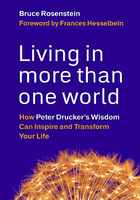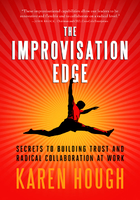What is wrong with black women? To hear some folks tell it, the answer is EVERYTHING.
Black women are to blame for urban violence, the welfare state, and the disintegration of the black family. Media fashions them as problems and oddities or downright disrespects them. ABC News has twice convened panels to discuss black women's lack of marriage prospects, once asking, "Why can't a successful black woman find a man?" Bill O'Reilly claims Beyoncé's song catalog and dance moves cause teen pregnancy. Psychology Today published an article online explaining why black women are "less physically attractive than other women," and during the 85th Annual Academy Awards, in 2013, the satirical news site The Onion called African American best actress nominee Quvenzhané Wallis, then nine years old, a "cunt."[1]
Memes traded online illustrate a shocking derision for black women. One popular one accuses them of dropping stacks of cash on weaves and wigs, making Korean beauty-store owners rich while their own bills stay due and their children's college funds stay empty. Another compares a photo from 1968 showing black women with Afros and fists righteously held high to a modern image of sisters in short-shorts and weaves twerking on the subway, as if to illustrate that all of black womanity has lost its way.
Some high-profile black men critique, advise, and clown sisters with little consequence to their popularity. A viral video of a sermon by black mega-church pastor Jamal Harrison Bryant showed the reverend in the pulpit castigating women with a line from a song by Chris Brown: "These hos ain't loyal." In a videotaped interview with entertainment website Necole Bitchie, actor-singer Tyrese cautioned black women against chasing away men with their independence. Ubiquitous funny man Kevin Hart "joked" on Twitter that "light-skinned women usually have better credit than dark-skinned women…. broke ass, dark hos." And King of Comedy D.L. Hughley told a National Public Radio audience, in all seriousness, "I've never met an angrier group of people. Like black women are angry just in general. Angry all the time."[2]
Well, damn.
Who is this lonely, booty-popping, disloyal, and financially foolish harridan who reigns in the public consciousness as the image of black womanhood? I am a black woman, and I don't recognize her. Most African American women I know don't either. To many of us, the popular mythology about who we are and how we live feels like a size-6 skirt on size-16 hips-stretched, distorted, and uncomfortable-and it has little to do with reality.
"At this point in my life, I'm fed up!" says Fatima Thomas,[3]a thirty-seven-year-old doctoral student and mother. She remembers as a young girl wanting to distance herself from blackness. "If I could just be smarter. If I could just work harder. If I could be more honest and more of a good person…. If I could do all of that, then I wouldn't have to deal with all of the bad stuff said about black people, and black girls and women, in particular.
"The only [difference] now is my skin is tough enough to push back."
Maligning black women, regardless of our personal or collective truth, is part of America's DNA. The seeds for negative perceptions of African American women were planted centuries ago, when black women were chattel, part of the engine that drove the American economy. Many scholars have named, explained, and extensively researched historical stereotypes and how they function in the lives of black women-notably Dr. Patricia Hill Collins, in her iconic work Black Feminist Thought: Knowledge, Consciousness, and the Politics of Empowerment. These "controlling images," as Collins terms them, provide a template for black women's place in public discourse. To understand how people speak about black women today, you have to understand the source of anti-black woman ideology.
Troublesome Roots
The moment the first black woman set foot on American shores, sexist and racist stereotypes were laid across her back. How do you justify holding a woman as property, working her from "can see" to "can't," routinely violating her sexually and breeding her, and separating her from her children and loved ones? By crafting an image of her as subhuman-no more worthy of empathy or care than a mule. Stereotypes of black women as asexual and servile, angry and bestial, or oversexed and lascivious were key to maintaining the subordination of black women during slavery.
They also provided a counterbalance to the identities of middle-class and wealthy white women, who had been placed on a pedestal as perfect illustrations of femininity-beautiful, pious, pure, submissive, domestic, and in need of protection. (But still kept personally, politically, and economically powerless.)[4] Throughout this book, I frequently compare black women's experiences with those of white women. These groups' struggles are connected by gender and yet are divided by different racial histories and privileges. I do not intend to imply that white women are primarily to blame for the oppression of black women, or that I have forgotten the existence of Latina, Native American, Asian, and Pacific Islander women. It is simply that, in Western society, black and white women have been placed in binary positions. White women have been idealized (through the lens of sexism), and black women have commonly been denigrated as their opposite.
There was no room for Melanie Wilkes (or even Scarlett O'Hara) out in the cotton fields or in plantation kitchens. Enter the three-headed hydra of distortion that dogs black women yet today-Mammy, Sapphire, and Jezebel.
Mammy is the obedient, loyal domestic who loves most to serve her white family.[5] Unfailingly maternal, she has no personal desires and is not herself desirable; her broad, corpulent body is meant solely for work and the comfort of others.[6] Mammy is asexual, and to underscore this, she is generally depicted as dark skinned and with African features, a headscarf covering what we imagine to be nappy hair-the negative of the pale, fine-featured, light-eyed, and straight-haired whiteness seen as the pinnacle of beauty.[7]
Of course, Mammy was always a fiction-a response to abolitionists' depictions of brutality and the ill-treatment of enslaved women. Female house slaves were not happy to be in bondage. The very idea is absurd. But the stereotype was useful in abetting slave culture. Positioning Mammy's girth and features as unattractive, particularly to white men, erased the routine rape of enslaved women.[8] The image of a content servant helped legitimize the economic exploitation of house slaves (and later the long relegation of black women to service and domestic work).[9] Mammy also stood as the embodiment of the optimal black female relationship to power-comfortably subservient.[10] She reinforced the idea that black women are natural workhorses, capable of carrying multiple burdens alone-not because they have to, but out of natural ability and desire.[11]
In antebellum America, true women (read: white women) were thought too delicate for hard manual labor. Black women, by contrast, were expected to work alongside and as hard as men.[12] They were not soft and delicate in the eyes of the majority culture; they were anti-women. In the mid-twentieth century, the image of the masculinized black woman found an identity in the form of "Sapphire," a character in the Amos 'n' Andy radio and television shows. By then, the stereotype had evolved into a rancorous nag-the stock angry black woman.[13]
Sapphire doesn't know a woman's (submissive) place and is therefore emasculating and repellent to men. Not so Jezebel, the embodiment of deviant black female sexuality. During slavery, black women were positioned as seductive and wanton to vindicate the naked probing of the auction block and routine sexual victimization and also to justify the use of black women to breed new human property.[14] The stereotype positioned black women as incapable of chastity in a society that demanded the innocence of women. And it further masculinized them, ascribing an unladylike sexual hunger more typical of men.[15]
Mammy, Sapphire, and Jezebel followed black women out of slavery, but a 1965 government report would introduce a new stereotype and cement all of these images as the cornerstones of how modern culture views black women.
Released in the same year that President Lyndon Johnson signed the Voting Rights Act, prohibiting racial discrimination in voting after centuries of black disenfranchisement from the democratic process, The Negro Family: The Case for National Action (or the Moynihan Report, for its author Daniel Patrick Moynihan, then assistant secretary of labor) put significant blame for societal problems on the role of black women in their households:[16]
In essence, the Negro community has been forced into a matriarchal structure which, because it is out of line with the rest of the American society, seriously retards the progress of the group as a whole, and imposes a crushing burden on the Negro male and, in consequence, on a great many Negro women as well.[17]
The Matriarch-the negative of the pleasantly nurturing Mammy-is a motherly figure who has overstepped her place and become the head of a black family. By her failure to perform her womanly domestic duty of being subordinate to a man, we are to understand that she upsets the stability of the family, her community, and the fabric of America, leading to crime, poverty, confusion of gender roles, and moral decay.[18] In that her dominance renders her unfeminine, the Matriarch has much in common with Sapphire, and her alleged unchecked baby-making recalls Jezebel.
Here, then, is the foundation for all those news reports and "jokes" at black women's expense. Sapphire is peeking from behind D.L. Hughley's rant about angry black women; Jezebel is all up in Bill O'Reilly's "concern" about Queen Bey's energetic wiggling, as is Mammy in Psychology Today's lament about our lack of desirability; and the Matriarch in all that hand-wringing over the "black marriage crisis" and advice to get black women hitched. Emancipation may have taken place more than a century and a half ago, but America still won't let a sister be free from this coven of caricatures.
Sadly, the notion of black women as oversexed, emasculating workhorses remains not just in the majority culture but deep in the bones of a black community influenced by the broader culture's racism and sexism-as well as in the considerable rewards that come with enforcing white, middle-class, Judeo-Christian, heteronormative respectability.
Respectability politics works to counter negative views of blackness by aggressively adopting the manners and morality that the dominant culture deems "respectable." In the United States of the late nineteenth century, black activists and allies believed that acceptance and respect for African Americans would come by showing the majority culture "we are just like you." In "No Disrespect," an article in Bitch magazine,[19] I explored the history of respectability politics in the black community and how it is employed against black women in the public eye.
Black women's clubs, spearheaded by women like Ida B. Wells, uplifted the black community and "proved" the respectability of African American women by replicating similar organizations that were led by white women.[20] Black civil rights activists showed up at marches and protests in their Sunday best, despite discomfort and sometimes only to be spat upon or stung by fire hoses. Those jackets and ties, heels, and hats sent a message: your stereotypes are untrue, we deserve equality, we, too, are respectable.[21] Dr. Sarah Jackson, a race and media studies scholar at Northeastern University in Boston, says, "Assimilation was an effective way to join the national conversation at a time when there was a great disparity in not just the visibility of black Americans, but in the opportunity and legal protections afforded them."[22]
But respectability politics is not without its problems. It often requires an oppressed community to implicitly endorse, rather than resist, deeply flawed values, including many that form the foundation of its own oppression. For instance, newly freed black women were expected to adhere to the strictures of the cult of true womanhood (sometimes called the cult of domesticity), a set of values associating authentic womanhood with home and family. The ideology, popular among the middle and upper classes, had long positioned white women as inherently childlike and submissive, in need of being "helped over mud puddles," as Sojourner Truth famously said in her "Ain't I a Woman" speech.[23] But those restrictions were sexist and stripped white women of agency, oppressing them just as racism disempowered people of color.
The black community still uses respectability politics as a form of resistance. And black women carry a double burden as they are asked to uphold ideas of decency built on both racist and sexist foundations. And perhaps now more than ever-when there are so many different ways to be black and to be a woman-this approach to liberation has the potential to harm more than uplift by reinforcing oppressive ideology and constraining the way African American women are allowed to live their lives.
Black Women Erased
The more that Americans are exposed to stereotypes about black women in the media, pop culture, and other places, the more these stereotypes are subconsciously triggered where real black women are concerned. This subconscious activation affects the way we are seen by potential employers, partners, the government, and others.[24] And so, black women are perpetually forced, as Melissa Harris-Perry explains in her book Sister Citizen, to try to stand straight in the crooked room created by biases against us:
When they confront race and gender stereotypes, black women are standing in a crooked room, and they have to figure out which way is up. Bombarded with warped images of their humanity, some black women tilt and bend themselves to fit the distortion.[25]
And some black women angle so hard against it that they break their backs. In an effort to shake the weight of society's biased expectations, some black women hold their tongues when they are justified in raging, deny their sexuality when they should be making love with abandon, give all their energy and care to others while they get sicker, hate African features instead of loving black skin, broad noses, and kinks. And they make decisions not based on their particular needs and wants but to circumvent what society thinks of them.
Kawana,[26] a divorced mother of two, became a homemaker after she married a high school sweetheart she no longer loved to avoid being a single black mother.
"I was tortured every day by that decision. I died inside for four years, and when I decided that I'd had enough and I couldn't live that lie anymore, everyone thought I was crazy. 'Why would you leave your husband who bought you a house and a truck and provides for you?'
"Who the fuck said that's what I wanted? Who said that any of those things were ever important to me?"[27]
When we speak, thirty-year-old Wendi Muse is contemplating adding bright red color to her hair. Quirky style is not uncommon in New York City, where Muse lives, but she is concerned that on a black woman, unnatural hair colors often lead to negative assessments of class and capability-more "ghetto" than "quirky and fun." She says that because of her race and gender, "I police myself on the way that I dress, the way that I joke…. I feel like I have to act really formal in spaces where others are not as guarded, because I'm constantly concerned about not being taken seriously."[28]
Erasing yourself is no good way to be seen.
The media, pop-culture critics, and brainwashed members of the black community may think black women are problems. In truth, African American women are seen as troubling because of the reductive way they have been viewed for hundreds of years. But black women are not waiting to be fixed; they are fighting to be free-free to define themselves absent narratives driven by race and gender biases.
Black women know better than anyone that as a group they face significant challenges. As individuals, many black women are struggling. More than a quarter of African American women are poor,[29] making them twice as likely as white women to be living in poverty. Black women suffer from high rates of heart disease, high blood pressure, and diabetes.[30] In a society that benefits married people, they are half as likely to marry as their white counterparts.[31] Black women account for one-third of domestic homicides in America.[32] They are, as a whole, overworked and underpaid, earning a fraction of what white and black men do for the same work.[33] These are problems-and not the only ones. Their weight and impact cannot be diminished. But black women should not be uniquely defined by their problems, nor should their problems be evaluated through the framework of stereotype.
In short, black women are not the trouble. They are not to blame for the systemic racism, sexism, and classism that buttress societal inequities. But tackling the Goliaths of government, the corporatocracy, and American bigotry is hard. Talking about weave-wearing, mad, broke hos is much easier, although tsk-tsking black women never made a sick body well or a neighborhood safer, improved a school system, fed and clothed a baby, or built a happy black family.
A hyperfocus on black women's challenges, with Mammy, the Matriarch, Sapphire, and Jezebel forever in the shadows, gives an inaccurate and narrow picture of black women's lives. Many will never experience the struggles that are so wedded to them in popular conversation, and those who do are so much more than their weight, singleness, or thin bank accounts. The current discussion about black women also ignores the many singular and group triumphs of black women and erases the fact that other groups wrestle with the same ills.
The panicked headlines, the relentless criticism by talking heads and know-nothing celebrities, the bogus and biased studies, the self-righteous and snide online memes-they turn African American women into caricatures. What black women really need is for the world, including many people who claim to love them, to recognize that they cannot be summed up so easily.
Tell the World Who You Are
"There's this quote I've seen," offers artist Lisa Myers Bulmash, forty-five, who lives in Washington State. "It says something like, 'The world will tell you who you are, until you tell the world who you are.' That includes people you think know you well. We cannot be seen as individuals with our own interior lives and motivations if others are always guessing-usually wrongly-at what makes us who we are."[34]
Forty-seven-year-old Nichelle Hayes agrees: "I think [black women] need to hear that we're okay. We have what we need. We don't have to change. That is not to say that we shouldn't be on a path of self-improvement. Everyone should. But it's not affirming or helpful to think, 'I'm not right as I am.'"[35]
Indeed. As a black woman and a writer committed to telling our stories, I believe it is important that we yell our real experiences above the din of roaring negative propaganda. No one can define black women but black women.
The Sisters Are Alright is an attempt to do just that-present a conversation about black women by black women. This book explores how the specters of Mammy, the Matriarch, Jezebel, and Sapphire still underpin perceptions of black women and it demonstrates the burden of living in the shadow of those stereotypes. But most importantly, in the following pages black women illuminate the reality of their lives-a reality that has been too often and for too long obscured by biased news coverage, GOP dog whistling, postracial and postfeminist progressives, and other people looking to make a fast buck reinforcing everything the world thinks is wrong with us.
Readers will also encounter rarely shared positive statistics and brief profiles of black women who are not just alright themselves, but who are working to make sure that other black women are alright, too. "Alright" does not mean possessing a life without hardship-being among the happy statistics rather than the dire ones. It means that black women are neither innately damaged nor fundamentally flawed. They are simply women navigating their lives as best they can.
Most of the women interviewed for The Sisters Are Alright are educated, part of the middle class, or both. And class is as great an influence on identity as race and gender. These women cannot represent all black women. But that is also the point. Black women's lives are diverse. The diminishing mainstream portrait of black womanhood cannot contain its multitudes.
Black women's stories look a lot different from what you've heard. And when black women speak for themselves, the picture presented is nuanced, empowering, and hopeful.














